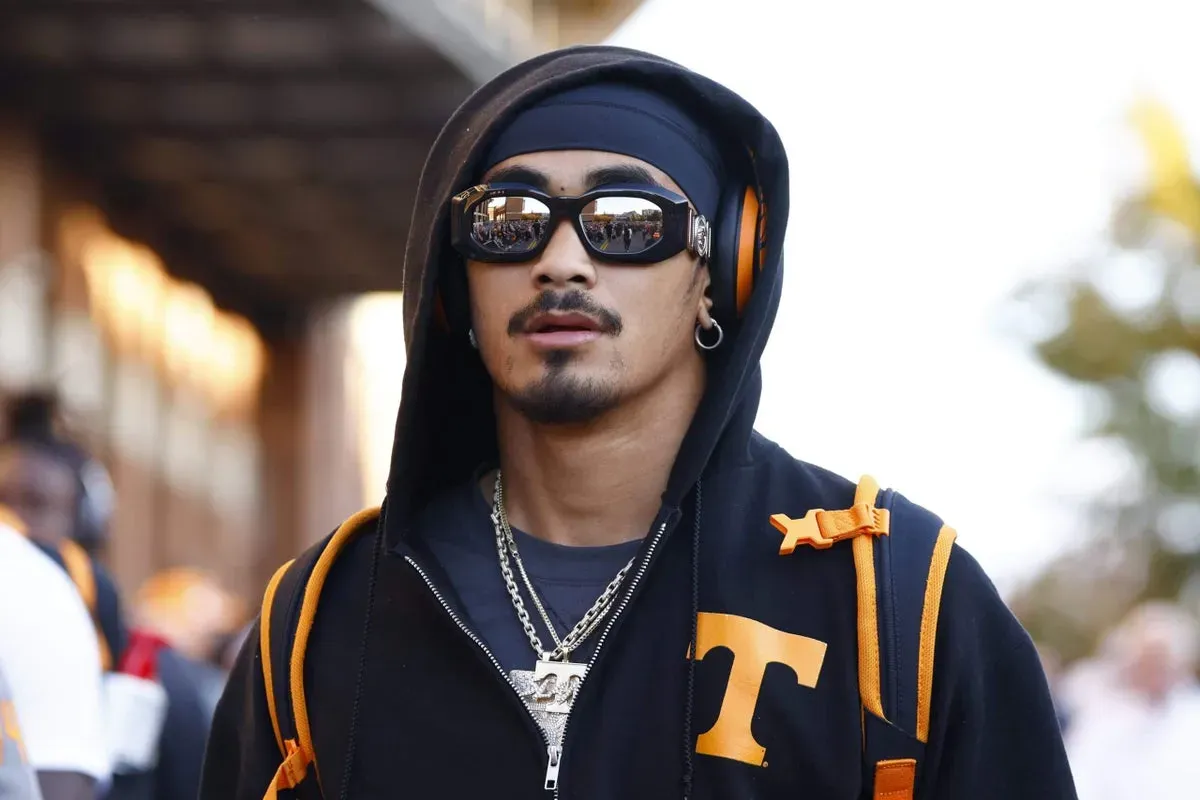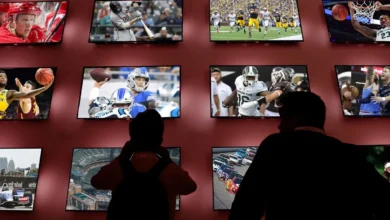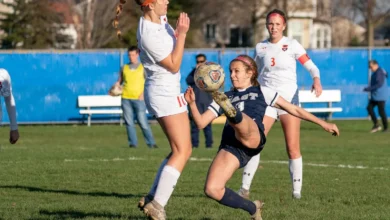Nico Iamaleava NIL Contract: A Shift in College Football

The evolving landscape of college football has captured significant attention, particularly with the emergence of the Nico Iamaleava NIL contract. As a former standout quarterback for the Tennessee Volunteers, Iamaleava’s recent negotiations for a substantial increase in his NIL earnings from $2 million to $4 million have not only raised eyebrows but also amplified discussions around athlete compensation. This pivotal moment highlights the chaos within college sports, particularly as players increasingly leverage name, image, and likeness agreements to enhance their marketability. As Iamaleava navigates the complexities of the transfer portal, speculations about his next move reflect a broader trend within college football. The implications of these developments could transform how future student-athletes approach their financial opportunities and engagements within collegiate athletics.
In recent years, the dialogue surrounding college athletics has shifted dramatically, particularly regarding athlete endorsement deals and financial agreements in the wake of NIL enactments. Nico Iamaleava’s pursuit for improved terms on his NIL contract underscores the increasing demand for competitive compensation among collegiate athletes. This occurrence marks a significant transition away from traditional dynamics, as seen in the current practices of the Tennessee Volunteers and their star players. The rise of negotiations reminiscent of professional sports contracts raises questions about the future of recruitment and athlete treatment amidst escalating financial expectations. As we delve deeper into this transformative era, it becomes essential to understand the broader implications for student-athletes navigating these novel endorsement landscapes.
The Rise of NIL Agreements in College Football
NIL agreements have revolutionized the landscape of college athletics, particularly in college football. These contracts, allowing athletes to monetize their name, image, and likeness, have become increasingly important as players demand compensation that reflects their value and contribution to their respective programs. The case of Nico Iamaleava serves as a striking example of this shift. His negotiations to double his NIL earnings underscore how critical these agreements have become in recruiting and retaining talented players, especially at top-tier universities like the Tennessee Volunteers.
As more college football players seek to capitalize on their fame and talent, the emergence of NIL deals presents both opportunities and challenges. While these contracts enable athletes to earn significant income, they also spark tensions between players and institutions. Universities that fail to meet athlete expectations regarding compensation risk losing them to rivals who offer more lucrative deals, often fueling transfers among top players. As this dynamic evolves, it raises questions about the sustainability of NIL agreements and their impact on the traditional college athletic model.
Nico Iamaleava NIL Contract Negotiations
Nico Iamaleava’s attempts to negotiate his NIL contract highlights a significant shift in athlete dynamics within college sports. Initially estimated at $2 million, his aspirations to elevate this figure to $4 million not only reflect the rising expectations of college football players but also illustrate the increasing commercialization of student-athlete experiences. Iamaleava’s actions have prompted discussions about equity and fairness in athlete compensation, particularly regarding how institutions support their stars amidst the lucrative landscape fostered by the NIL agreements.
The repercussions of Iamaleava’s NIL negotiations extend beyond his personal situation, as they symbolize the broader challenges facing college athletics. With increasing influence from athletes looking for better compensation and support, programs may need to reevaluate their financial strategies and recruitment methods. This tension raises critical debates about how traditional college football cultures adapt to the burgeoning necessity for financial incentives, particularly in light of potential changes resulting from the evolving NIL landscape.
The Impact of the Transfer Portal on NIL Agreements
The introduction of the transfer portal has added another layer of complexity to NIL agreements in college football. With athletes now having the freedom to transfer to other programs without sitting out a season, the stakes have increased for both players and schools. In Iamaleava’s case, entering the transfer portal has made it possible for him to negotiate better offers, creating competition among universities that are eager to secure top talent while also grappling with the financial implications of NIL contracts.
The transfer portal not only affects athletes’ career choices but also reshapes recruitment strategies. Colleges are now under pressure to enhance their NIL offerings to attract and retain high-caliber players. Schools like the Tennessee Volunteers must prioritize building a competitive NIL infrastructure to remain relevant and avoid potential talent losses. As this scenario unfolds, the interplay between athlete mobility and NIL agreements could redefine team compositions and balance in college football.
Shifts in College Athletics Culture and Ethics
The case of Nico Iamaleava illuminates the tensions emerging from the evolving culture of college athletics, marked by uncertainty and shifting ethical considerations. Traditionally, college athletes were viewed as amateurs committed to education and sports, but the implementation of NIL agreements has blurred those lines. The confrontational approach taken by Iamaleava raises questions about athlete representation and the ethical responsibilities of universities to their players amidst these lucrative deals.
As college football continues to embrace a more professionalized model, the implications for student-athlete identities come into focus. Stakeholders in college sports, from coaches to university officials, must navigate this new terrain while maintaining the integrity of their programs. Balancing the influx of money with the values traditionally associated with college athletics represents a significant challenge and will be crucial in determining the future relationship between universities and their athletes.
Legal Ramifications of NIL Policies
As highlighted by experts like Gabe Feldman and Darren Heitner, the legal landscape surrounding NIL agreements continues to evolve, with potential implications for the future of college athletics. The chaos surrounding Iamaleava’s situation emphasizes the need for clearer policies that protect both student-athletes and institutions. Legal challenges arising from NIL agreements could force the NCAA to reconsider its regulations, especially concerning athlete compensation and program compliance.
With NIL initiatives gaining traction, schools must also prepare for the ramifications of potential lawsuits and further legal scrutiny regarding their practices. The actions taken by players like Iamaleava exemplify a shift towards greater agency for athletes, ultimately leading to a re-examination of existing legal frameworks. As colleges adapt, this transformation could redefine the rules governing recruitment and compensation across the board.
Navigating Athlete Compensation in College Football
The debate over athlete compensation in college football has intensified with the introduction of NIL contracts. As Nico Iamaleava’s case suggests, student-athletes no longer see themselves merely as participants but as brands worthy of significant financial investment. This shift is challenging to manage for universities, which must balance the demands for better pay with budget constraints. As schools navigate these issues, establishing equitable compensation structures becomes a pressing concern.
Moreover, the transparency of NIL agreements and the amounts offered to players will likely be scrutinized, fostering ongoing discussions about fair pay in college sports. Institutions struggling to keep pace with peer programs that successfully market their talent may find themselves at a disadvantage. As compensation models are tested and re-evaluated, the college football landscape will undoubtedly evolve, rooted in players’ rights to benefit from their talents and marketability.
Future Trends in College Sports with NIL
As NIL agreements continue to shape college sports, the future of athletics may look significantly different than today. The trend toward increased athlete compensation suggests that student-athletes will have more influence and bargaining power over their professional journeys. With players like Nico Iamaleava leading the charge, we could witness the normalization of aggressive contract negotiations in the college framework, akin to what is observed in professional leagues.
These developments will require colleges to reassess their recruitment strategies, relationships with players, and overall operational structures. Additionally, as the NCAA faces increasing pressure to adapt to modern realities, we may see a push toward more standardized NIL policies that provide clearer guidelines for athlete compensation and contract negotiations. The future of college sports hinges on how effectively these changes are implemented across the board.
The Role of Coaches and Athletic Departments in NIL
The impact of NIL on college football extends beyond players to include coaches and athletic departments as well. As star players like Nico Iamaleava command higher contract values, the expectations placed on coaching staff to navigate this landscape become critical. Coaches must not only focus on player development but also learn how to position their programs to attract endorsements and effectively manage NIL relationships for their athletes.
Additionally, athletic departments must bolster their support systems to educate players on how to handle their NIL opportunities responsibly and effectively. From financial literacy training to contract negotiation guidance, the role of fully supporting athletes cannot be overstated. Institutions that proactively embrace these responsibilities are likely to foster positive outcomes for their athletes and maintain a competitive edge in recruiting talented players.
Evaluating the Success of NIL Initiatives
As the NIL landscape continues to evolve, measuring the success of initiatives surrounding athlete compensation becomes crucial. Performance indicators may include retention rates of star players, the attraction of top recruits, and the financial health of athletic programs. Nico Iamaleava’s influence on college football dynamics and recruitment strategies serves as an important case study in evaluating these NIL models.
Monitoring the effects of NIL contracts on the overall success of athletic programs will be essential in shaping future strategies. Colleges that invest thoughtfully in their athletes’ NIL opportunities are likely to see the most significant returns, whereas those that tread cautiously may risk falling behind in an increasingly aggressive recruitment environment. Ultimately, understanding the effectiveness of NIL initiatives will define how college athletics position themselves in the competitive sports market.
Frequently Asked Questions
What is the status of Nico Iamaleava’s NIL contract with the Tennessee Volunteers?
Nico Iamaleava’s NIL contract with the Tennessee Volunteers was reportedly valued at approximately $2 million, but he sought to negotiate this amount to $4 million. This negotiation led to tensions that resulted in his departure from the team.
How has Nico Iamaleava’s NIL contract impacted his decision to enter the transfer portal?
Nico Iamaleava’s quest for increased NIL earnings and the disappointment over the current amount of his NIL contract prompted him to enter the transfer portal. This shows how NIL agreements are reshaping athlete choices in college football.
What does Nico Iamaleava’s situation reveal about the evolution of NIL agreements in college football?
Nico Iamaleava’s experience sheds light on the evolving nature of NIL agreements in college football, illustrating how athletes are leveraging their market value, akin to professional contracts, leading to more complex negotiations and potential repercussions.
How are NIL contracts affecting athlete compensation in college sports like in Nico Iamaleava’s case?
NIL contracts, as demonstrated by Nico Iamaleava’s situation, are dramatically changing athlete compensation in college sports. Athletes are now negotiating substantial sums that can rival professional pay, indicating a shift in the financial dynamics of college athletics.
What are potential outcomes for athletes like Nico Iamaleava after entering the transfer portal?
Athletes like Nico Iamaleava, after entering the transfer portal, may negotiate new NIL contracts with different schools. This can lead to enhanced financial opportunities but also uncertainty as schools may struggle to meet the athletes’ expectations.
How does the NCAA’s stance on NIL affect players such as Nico Iamaleava?
The NCAA’s evolving stance on NIL affects players like Nico Iamaleava by allowing them to monetize their name, image, and likeness. However, this also introduces complexities and potential conflicts regarding recruitment and athlete compensation.
What challenges does Nico Iamaleava’s NIL situation present for college athletics?
Nico Iamaleava’s NIL situation underscores significant challenges for college athletics, including recruitment practices, financial disparities between programs, and the potential shift in how athletes are viewed—not merely as amateurs but as marketable entities.
In what ways are NIL uncertainties illustrated by Nico Iamaleava’s actions?
Nico Iamaleava’s actions reflect the uncertainties surrounding NIL agreements, including the unpredictability of financial negotiations and the evolving landscape of college athletic compensation, highlighting a new paradigm in student-athlete relations.
| Key Point | Details |
|---|---|
| Nico Iamaleava’s NIL Contract | Iamaleava attempted to double his NIL earnings from $2 million to $4 million, resulting in his exit from the Tennessee Volunteers. |
| Influence of NIL Contracts | The introduction of NIL contracts has led to chaos in college football, making it more similar to professional sports. |
| Transfer Portal Speculation | Iamaleava entered the transfer portal with UCLA as a potential destination, though their offer was lower than expected. |
| Expert Opinions | Experts suggest that the current situation reflects a significant shift in college athletics. |
| NCAA’s Future Challenges | As player compensation issues arise, the relationship between schools and athletes may further deteriorate. |
Summary
The topic of Nico Iamaleava’s NIL contract encapsulates the shifting landscape of college athletics in 2023. As Iamaleava sought to significantly increase his earnings, the implications of NIL agreements have come to the forefront, highlighting the transformation of amateurism in college sports. The events surrounding his negotiations, transfer portal entry, and expert commentary underscore the uncertainty and potential chaos that may redefine the future of college football.




